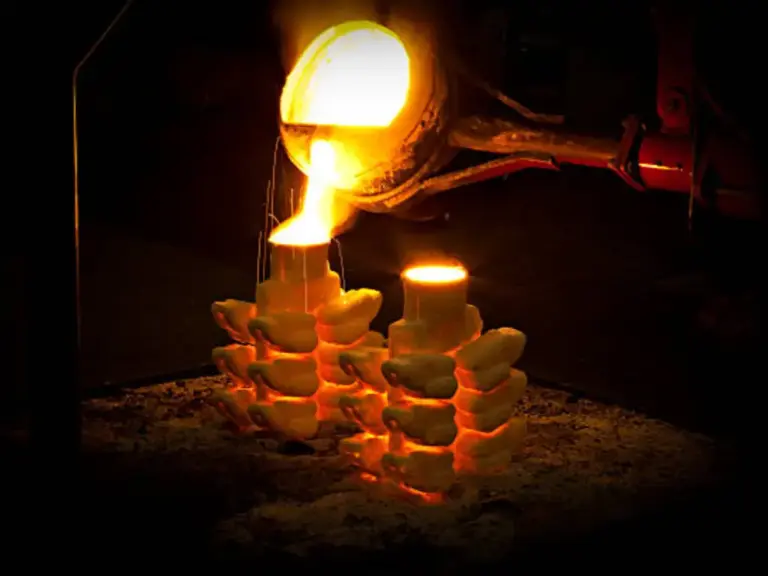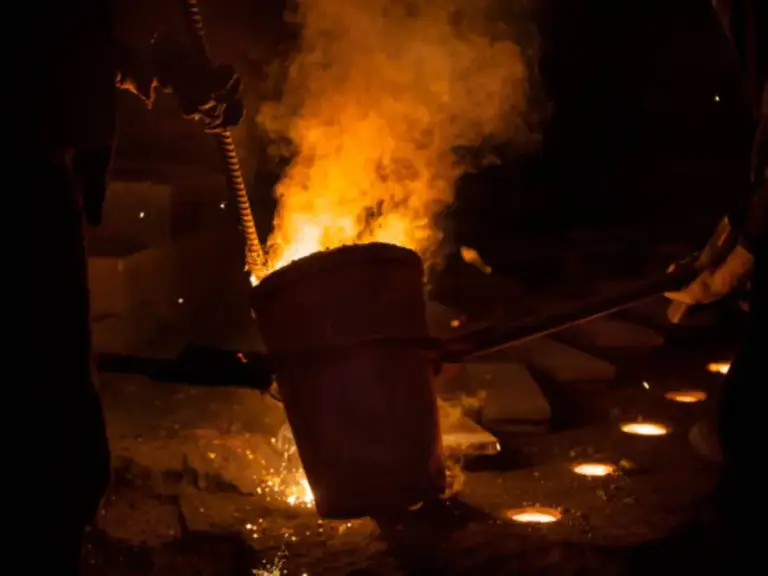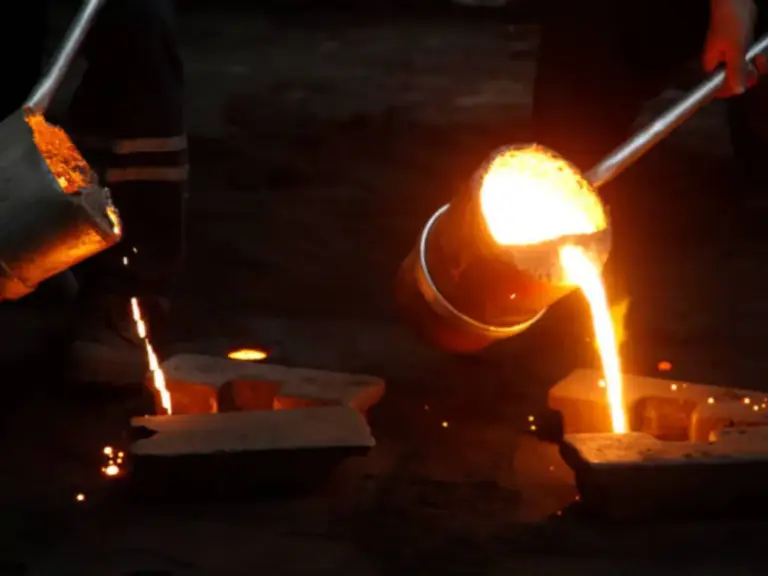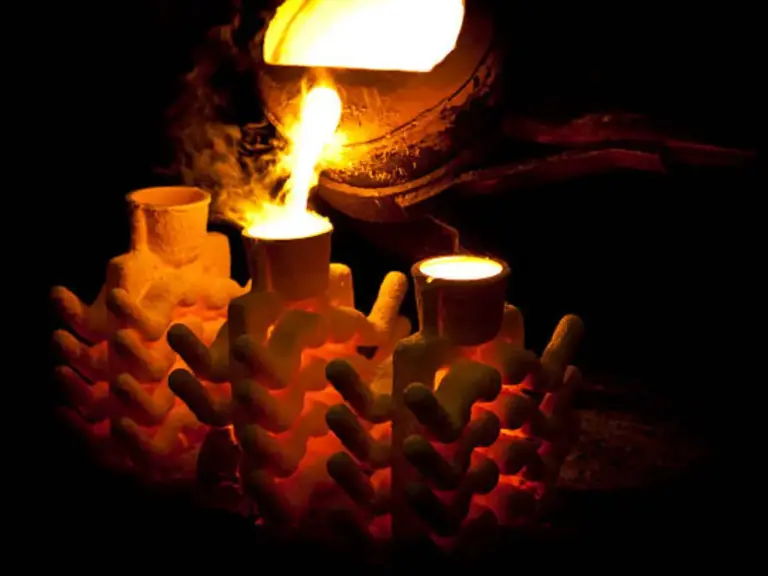Defining Investment Casting & Lost Wax
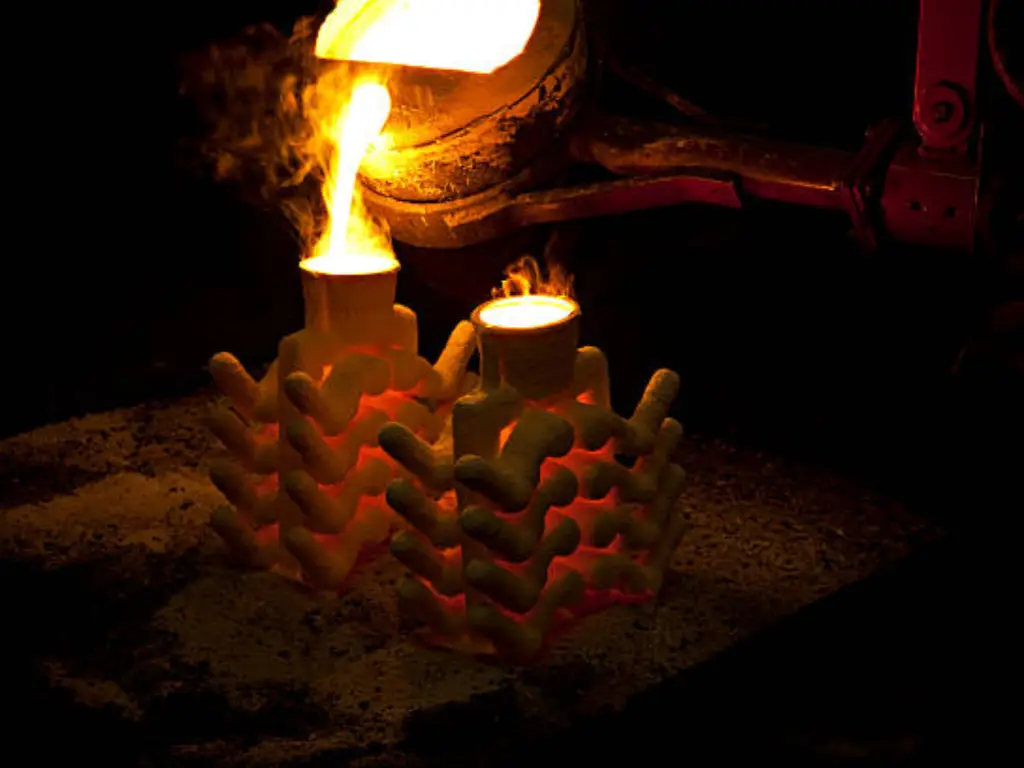
Investment Casting is an advanced manufacturing method that is based on the ancient method of lost wax casting (or the lost wax process). Also commonly known as precision casting, the technique is unique in the metal manufacturing industry because it can create metal components with an unprecedented level of dimensional accuracy and surface finish. The very word investment is based on the act of investing (to surround or clothe) a wax pattern with a liquid ceramic material- a refractory material which solidifies to create a strong ceramic mold.
The method dates back more than 5,000 years, and it was first used in jewelry and art. Modern investment casting is a combination of ancient art and modern metallurgy. In essence, the aim is to produce a component that is a close replica of the original wax pattern, which will produce a final component that will need little or no secondary machining.
The lost wax technique is not just a casting technique; it is an essential enabling technology to produce complex shapes and complex designs that would otherwise be impossible or prohibitively costly to produce by other casting techniques. It is a coordinated process of material science and technical expertise, all the way to the finished product. Investment casting is the depository of fidelity, so that the molten metal part is a replica of the sacrificial wax model.
Step-by-Step Investment Casting Process
Investment casting is carried out in a series of carefully controlled operations that constitute a unified manufacturing process, which determines the quality and nature of the final product. This is a casting technique that converts a model made of polymer into a high-strength metal part.
Wax Pattern Creation and Assembly
The process starts with the wax pattern, a precise, slightly oversized copy of the final component (to allow thermal contraction). These patterns are usually produced by pouring molten wax into a permanent, precision-machined master pattern tool (usually aluminum or steel). In the case of prototyping or small parts, the wax pattern can be created through 3D printing. Several wax patterns are then mounted onto a central wax running system to create a structure often known as a tree or cluster. This assembly is necessary to facilitate the smooth movement of molten metal during the pour and is a very important initial step in the creation of the investment casting mold. The art of this wax casting assembly influences the ultimate integrity and uniformity of the casting.
Building the Ceramic Shell
After assembling the tree, it is surrounded or invested systematically with a refractory ceramic material. This is done by successive dipping of the wax pattern assembly in a ceramic slurry, a mixture of fine refractory material, and then coating it with a stucco or coarse ceramic grain. This dip-and-stucco process is repeated several times with drying periods in between. The thickness and strength of the outer shell is added with each coating layer. The process of lamination is repeated until the ceramic shell has the required thickness and strength to support the next high-temperature pour. The size and the material properties of the metal parts to be cast usually determine the thickness.
De-Waxing, Pouring, and Finishing
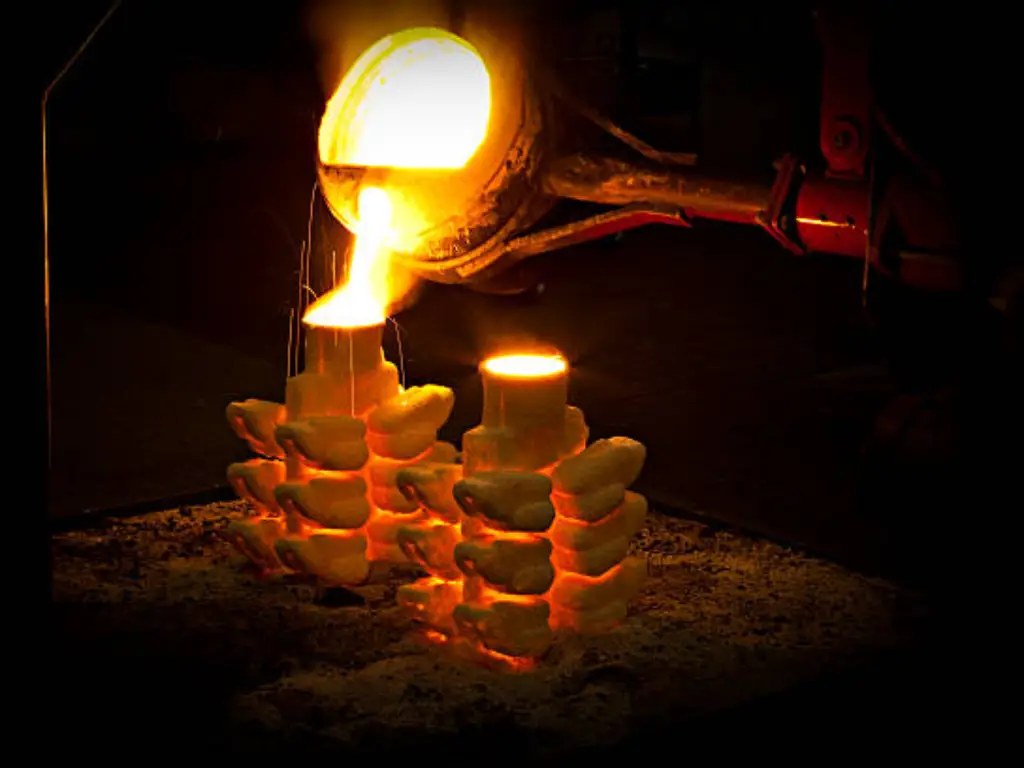
The nest step is the lost wax process itself. The ceramic mold is hardened and the wax pattern is put into a high-pressure steam autoclave or flash furnace. The molten wax melts rapidly and runs away, leaving a hollow ceramic shell with the exact geometry of the required component. The shell is then heated to very high temperature (usually over 1000℃) to eliminate all traces of wax and to give the mold as much structural integrity as possible.
The molten metal is poured into the pouring cup immediately after firing, or when still hot, and flows down the central sprue and fills the internal cavities of each mold on the tree. The ceramic mold is heated to a high temperature so that the liquid metal flows freely, even into the smallest and most delicate features (as in turbine blades). The ceramic shell is broken off the metal casting (the shakeout process) after cooling and solidification. Lastly, the individual castings are sawed off the tree and are subjected to finishing operations, possibly involving little grinding, blasting, and heat treatments.
| Step | Key Operation | Purpose / Result |
| 1. Wax Pattern Creation & Assembly | Pressing patterns into a master die, then mounting them onto a central runner to form a “Tree” or “Cluster.” | To create a precise, slightly oversized replica of the final component, facilitating batch pouring. |
| 2. Building the Ceramic Shell | Successive dipping of the wax cluster into ceramic slurry and coating with coarse stucco (refractory grains). | To construct a sufficiently strong, heat-resistant ceramic mold around the wax pattern. |
| 3. De-Waxing & Firing | Heating the mold in a high-pressure steam autoclave or flash furnace. | To melt and remove the wax (the “Lost Wax” process), leaving a hollow ceramic cavity, and to fully harden the mold. |
| 4. Pouring & Cooling | Pouring molten metal into the high-temperature ceramic mold (often while still hot). | Metal fills the mold cavity, solidifies, and takes the exact shape of the desired part. |
| 5. Knockout & Finishing | Breaking away the ceramic shell (Shakeout), sawing individual parts off the tree, and subsequent grinding/heat treatments. | To separate the casting from the mold and runner system, delivering the final, finished metal component. |
Key Advantages Over Other Methods
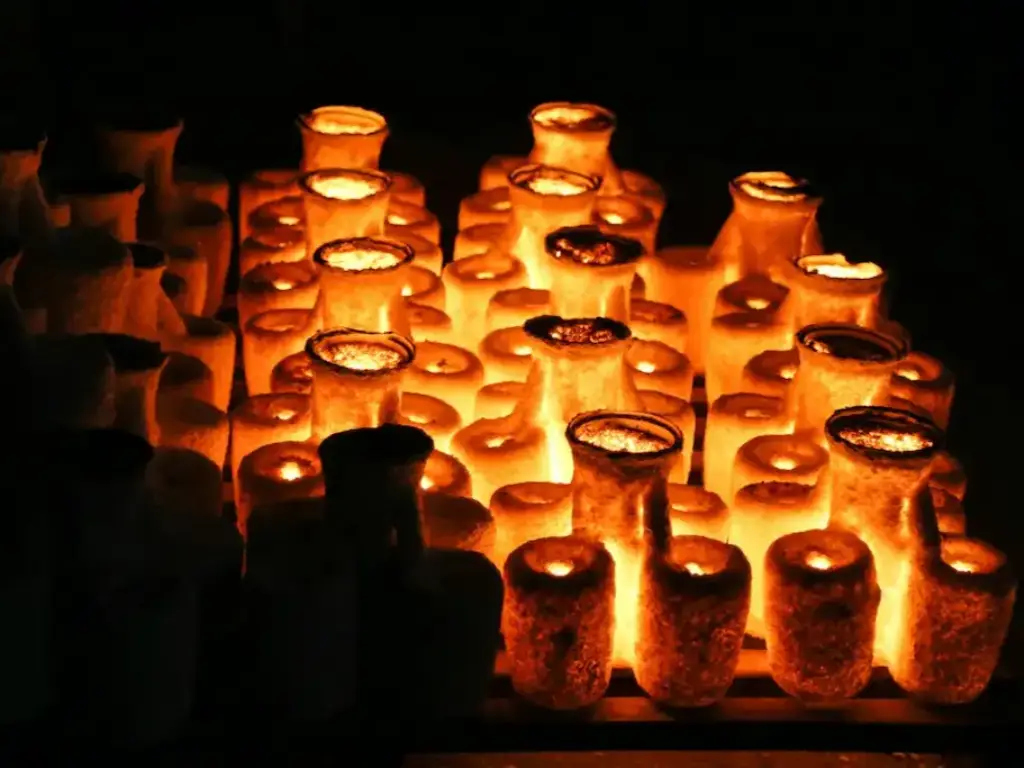
The choice of a manufacturing process is usually a trade-off between cost, time and quality. Investment Casting is always able to provide better results when high precision and complexity cannot be compromised, unlike more traditional processes such as sand casting or die casting.
One of the fundamental strengths is the dimensional accuracy that can be attained. Because of the single, unitary ceramic mold constructed around an accurate wax pattern, the resulting cast component has very tight tolerances- often much tighter than sand casting, which tends to creep and develop surface flaws. Moreover, the cast surface finish is much smoother than a sand-cast part, and less expensive secondary machining is unnecessary, and the material is used more efficiently.
Although die casting provides a very good surface finish and is fast, it is restricted to non-ferrous, lower-melting-point alloys and cannot produce the same complex shapes and internal features as IC. Investment casting is especially suitable to metals with very high melting points, including special stainless steel alloys and nickel-based superalloys, which are not die-castable. To design engineers, IC is more liberating, since it does not need a draft angle, and can include complex internal passages and undercuts, converting multiple fabricated parts into one, dependable metal part. It is the final recourse when the quality of the casting has to be extremely high and when machine tools are not able to reach the necessary internal geometry.
| Casting Method | Dimensional Accuracy | Surface Finish | Geometric Complexity | Applicable Materials | Typical Volume | Initial Tooling Cost |
| Investment Casting (IC) | Excellent / Tight Tolerances (minimal secondary machining needed) | Very Smooth (e.g., Ra 3.2 μm) | Very High (no draft, internal features, undercuts possible) | Virtually all metals, including Superalloys and High-Temp Steels | Medium to Large | High (Precision wax tooling) |
| Sand Casting | Fair to Good (Wide Tolerances) | Rough (Significant secondary machining required) | Medium (Requires draft angles) | Wide range (Ferrous and Non-Ferrous) | Small to Medium | Low (Simple wooden or plastic patterns) |
| Die Casting | High | Very Smooth | Medium (Requires significant draft angles, limited internal features) | Low-Melting-Point Non-Ferrous Alloys (e.g., Aluminum, Zinc, Magnesium) | Very Large | Very High (Hardened steel dies) |
Industrial Applications and Case Studies
The accuracy and flexibility of investment casting has rendered it essential in a broad spectrum of diverse industries, where it is used to create small components with extremely fine detail, as well as large and sturdy industrial components.
Agricultural Machinery
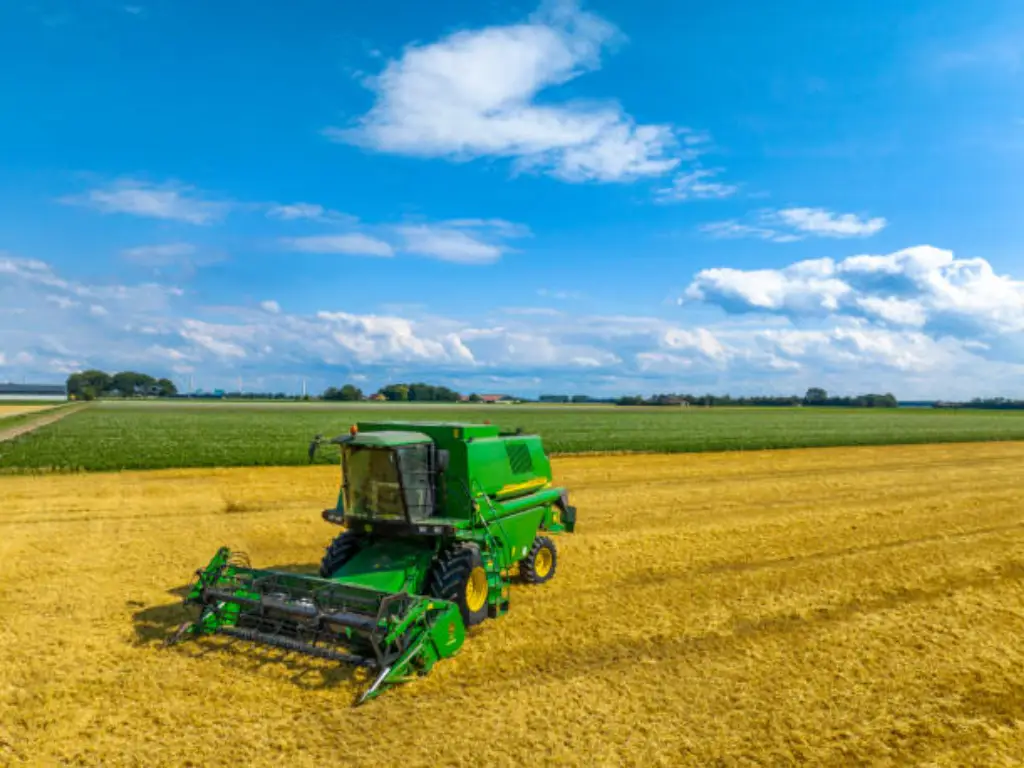
Investment casting is used in modern agricultural equipment to make high-strength wear-resistant components, including gear housings, brackets, impellers, and cutting components. These components are frequently subjected to abrasive, high-load, and outdoor environments, in which dimensional stability and material longevity have a direct influence on equipment life. For example:
- Precision Gear Components: Require tight tolerances to ensure smooth torque transmission in tractors and harvesters.
- Pump and Fluid System Parts: Cast with intricate internal channels, optimizing irrigation and fertilizer distribution.
- Soil-Tilling and Cutting Elements: Made from wear-resistant alloys, reducing replacement frequency and overall maintenance costs.
Investment casting not only contributes to the extended service life in severe farming conditions but also assists manufacturers in lowering the total weight of equipment, enhancing fuel efficiency, and maneuverability in large-scale equipment.
Railway & Transportation
Investment casting is a natural fit in the railway industry because it requires strong, fatigue-resistant, and safety-critical parts. Typical uses are:
- Brake System Components: Such as caliper housings and actuator parts, where precision and reliability are essential for passenger and freight safety.
- Coupling and Suspension Parts: Complex geometries that must withstand repeated impact and vibration cycles.
- Engine and Exhaust Elements: For locomotives, investment casting allows the use of heat-resistant alloys, ensuring durability under continuous high-temperature operation.
Through investment casting, the manufacturers of railways obtain superior dimensional accuracy and less machining, which is essential in the production of parts that are required to fit perfectly into the large assemblies with stringent international standards.
This wide range of applications shows that investment casting is the manufacturing process of choice whenever a metal component needs a mix of material strength, geometric complexity, and the least amount of post-cast finishing.
Design for Casting: Maximizing DFM Benefits
To attain an optimal final product through investment casting, it is important to observe the Design for Manufacturing (DFM) principles. Although IC provides a great deal of design freedom, it is important to understand the limits of this technology to guarantee the quality of the casting and control costs.
This is usually optimized to small parts or medium-sized components, but the upper limit is constantly being extended. The most important design factors are to be consistent in the thickness of the walls where feasible, to have large radii at corners to allow the liquid metal to flow properly, and to consider the natural shrinkage factor of the metal.
The foundry should collaborate with engineers to establish the right dimensional accuracy and close tolerances. Because the ceramic shell is expendable, the tooling must take into account the shrinkage of the material, which varies with the type of material being poured, whether it is carbon steel, stainless steel alloys, or superalloys. Failure to follow these principles may result in defects, which require secondary machining and cancel the cost advantages of the IC process. An effective design does not consider the casting process as a mere pouring operation, but as a complete system in which the wax, the slurry, and the molten metal all interact in the ceramic cavity.
Beyond Basic Casting: The Silica Sol Precision Advantage
Even though the rules of investment casting are predetermined, the refractory ceramic in the shell has a great influence on the end quality, cost, and complexity capacity. High-tech foundries are good at this, solving the underlying process pain points.
Traditional casting is typically the water glass (sodium silicate) process- cheap, but with rough surfaces and poor alloy compatibility. To meet the demands of high-performance today, the Silica Sol process is the world standard, with high-quality surface finish and close dimensional accuracy. At Bessercast, we have only one product, Silica Sol, which provides us with the best base to provide material integrity and performance.
- Unrivaled Material Expertise: We have established data on 200+ grades and have IATF 16949 and ISO 9001 certification. We stabilize molten metal composition with a German-made SPECTRO spectrometer and pour, eliminating the variability of pour-as-you-mix, and offer certified Dimensional and Chemical reports.
- Complex Part Mastery: Our R&D team has 4,500+ unique products, vacuum casting, and simulation software, which produce ultra-thin walls as small as 0.5 mm, and can work with alloys that many foundries cannot.
- One-Stop Efficiency: We have 14 machining centers and integrated treatments, which help to reduce rework, minimize assembly and packaging costs, and decrease sampling cycles.
To ensure precision and tailored alloy performance, visit us at bessercast.com.
Investment Casting Cost and Volume Considerations
Although investment casting is of high quality, it is necessary to take into account the economics of the production process. The initial tooling (the master pattern die) is a large initial investment, especially when compared to the tooling needed in sand casting. Investment cast components are therefore usually cheaper to manufacture in large quantities. The low per-unit cost and the savings of secondary machining are very appealing because the high initial cost is amortized over a large number of parts.
In the case of manufacturers, the long-term investment decision is a tradeoff between the initial tooling cost and the total cost of ownership (TCO). When the component is complicated, has tight tolerances, or is composed of a high-performance type of material, the IC process is the obvious better choice, whether in large volumes or small.
The best cost control solutions can be provided by foundries such as Bessercast, which have our scale and the ability to develop flexibly. Our lean system and years of experience enable us to offer reduced development costs and specialized services to small batch trial production, reducing the risk that is traditionally linked to the high initial investment needed in investment casting. This flexibility enables new designs including those in special materials such as stainless steel to be transferred to large volumes with ease.
Conclusion
The casting of investment process is also one of the pillars of metal production, which is a testimony of how ancient art can be constantly perfected by modern science. Between the first wax casting and the last dimensional check, it provides a level of control of material integrity and geometric form unequalled.
The future development of the industry will have all the more to rely on such precision casting as the industries require a lighter, more powerful, and more elaborately drawn components, the very essence of a jet engine, the tiniest medical implant. High-temperature capability, high dimensional accuracy and the capability of making complex parts all combine to make sure that the investment casting process will remain the crucible in which the next generation of industrial innovation will be formed.
